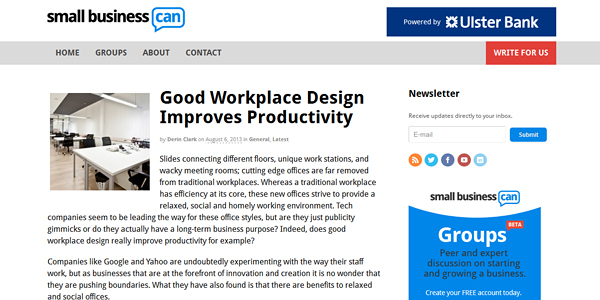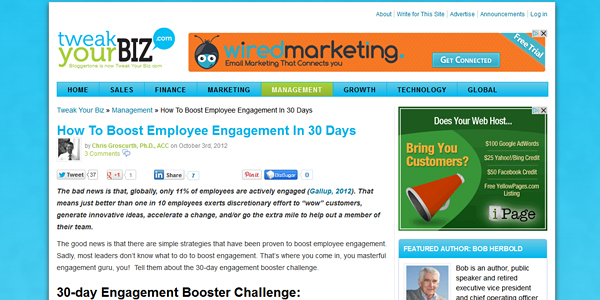Cutting Business Costs – An Alternative Approach

I made an extensive list in an earlier blog of 50 different ways that a business can make savings. Individually, none of them are likely to make a huge difference (depending on the size of your sales reps’ expense accounts, of course), but add a number of them together and you could very quickly start to notice a significant improvement.
Most of the items listed were fairly easy to do. On the whole they’re just common sense, a matter of correcting established bad habits or transposing to a work environment those things you do without thinking every day at home, when it’s your own personal money that’s being affected. Nonetheless, it’s surprising just how many businesses fail to prevent a potentially substantial part of their profits trickling away in such wasteful ways – even those who don’t think twice about gaining each and every penny they can when negotiating a deal.
Process management and lean manufacturing
In between all those suggestions I made, there’s one that may not have made much of an impact on you, but which could be the biggest cost saver of them all (it was at Number 9). It takes a little more effort than remembering to turn off a monitor at the end of the working day, but done properly could take your business to the next level, maximise your earning potential and push your profits to the max.
It’s a different approach to cutting your costs, because it’s not about a little thing here and a little thing there, it’s about the way you run your whole business. It’s about taking an in-depth look at all the processes involved in your day-to-day operations and seeing where they could be improved. That could mean any number of things and can often uncover surprisingly inefficient working patterns that are slowing you down, reducing your output and cutting into your profits.
If you’ve come across the terms ‘lean manufacturing’, ‘Kaizen’, ‘continuous improvement’, ‘Six Sigma’ and ‘5S’, then this is the territory we’re in. Basically, there is now a whole industry and a number of philosophies built around helping companies of all sizes reduce waste, eliminate errors, boost customer satisfaction, cut costs and speed up operations.
All are designed to make your company perform better by making your working patterns and procedures more efficient and more effective, with the end result of more profits. Which is, after all, what most businesses are striving for.
At first glance, it can all seem like a hard thing to take on, and many of the following can even look quite intimidating, but at heart the concepts are actually relatively straightforward and can be applied in any business.
Quality management and Six Sigma
This looks at working procedures with an eye for quality, or making sure things are done properly and consistently. Every company makes mistakes, and many can become expert in fixing them, knowing how things can be put right quickly and effectively in a way that placates an unhappy customer.
You’ll even hear some people tell you that a problem well sorted can be a better advert for a company than a job done properly. It shows you care, they’ll say. Well…yes…except how long has it taken you to put it right? And more importantly, how long will it take you to put it right when it happens again?
Six Sigma is a terminology-laden approach to quality management that aims to eliminate errors by getting a team working in a way that delivers a set objective accurately and consistently. It was developed by US company Motorola and derives from the Plan-Do-Check-Adjust system. Basically this means:
Plan: devise a system which best achieves your objective. This can be something as simple as getting your orders delivered on time.
Do: put your system in place, and ensure everyone involved is following the agreed procedures.
Check: monitor your performance to see if your system is actually working. And when it doesn’t work, find out where things went wrong and see if there’s anything you can build into your system to stop it happening again.
Adjust: make changes accordingly and continue to monitor.
In many ways, the introduction of Six Sigma started the professionalisation of quality management, as it demanded a hierarchy of experts, with those at the top committing all their time to managing, coaching and monitoring the rest of the staff.
That’s all well and good if you’re a multimillion dollar industrial concern. However, the basic principles can be applied at any level; just keep the mantra ‘Prevention is better than cure’ in your head and you shouldn’t go far wrong.
Continuous improvement and Kaizen
‘Kaizen’ is a Japanese term that means something like ‘change for the better’, but the process associated with it, developed by Japanese businesses in the aftermath of World War II, has become almost synonymous with the concept of ‘continuous improvement’.
Kaizen is all about eliminating waste and improving efficiency, but is far more inclusive than many other systems. In fact, done correctly, Kaizen aims to humanise the workplace, remove unnecessarily hard work and encourage all staff at all levels to spot and eliminate waste in the workplace.
Kaizen has five founding elements, which are: teamwork, self-discipline, morale, quality circles and suggestions for improvement.
One company closely associated with kaizen is Toyota, where workers are even encouraged to stop the production line when they spot an abnormality, involve a supervisor and initiate a ‘kaizen event’, basically a focused activity on a particular process or activity designed to identify and quickly remove wasteful activity.
I could imagine a few production managers blanching at the very idea of stopping a production line on the say-so of anyone and everyone, and it’s certainly not an approach that would work for every business. Nevertheless, the basic idea of encouraging all staff to play an active role in business improvement is one that can yield surprising and impressive results.
Workplace organisation and 5S
5S is another Japanese concept and is all about organising and standardising the workplace for maximum efficiency. It also aims to create a cleaner, more pleasant environment to work in, so that people will feel happier and thus be more productive.
The name derives from the five guiding principles, which are all Japanese words beginning with an ‘s’: seiri, seiton, seiso, seiketsu, and shitsuke. Translated into English (and retaining those 5 s’s!), these mean – very roughly! – Sort, Straighten, Sweep, Standardise and Sustain.
One of my friends works as Business Improvement Leader at a multinational aeronautics company with a name that is a byword for quality. She’s very keen on enforcing 5S principles on the factory floor, and I don’t think it’s just because, as she points out occasionally, some days she’s essentially being paid to tell men to tidy up after themselves!
One day, she noticed that during one particular process in the factory, workers had to walk several yards to fetch a certain regularly used tool and then, once they’d finished using it, travel the same distance to put it back (they were evidently well trained in many regards – having set ‘homes’ for regularly used tools and components is good 5S practice: it means everyone knows where to find something, or, looking at it another way, saves time wasted while people wander around looking for things!). But why, she wondered aloud, didn’t they keep the tool nearer where it was needed, so that they didn’t have to keep walking backwards and forwards all day? I believe the general response was one of embarrassed silence, with everyone looking at each other trying to work out why no one had noticed or thought of this before.
These sorts of things are almost certainly going on in offices, factories, workshops and warehouses up and down the country all the time.
Doing things better
These are, naturally, very brief introductions to concepts about which people write large and weighty tomes, complete PhD’s and train and study for many years. In other words, this short blog won’t make you an expert!
However, as I stated at the beginning, even getting to grips with just some of the ideas and principles behind them could result in your business operating in a more efficient and cost effective way. You can always improve, always do things better. How difficult that proves to be partly depends on how difficult you want it to be.
How have you gone about improving your business? Have you tried any of the above methods and how did they work for you? Leave your comments, and join the discussion!
Rebecca Price
Latest posts by Rebecca Price (see all)
- The Benefits of Jiffy Bags and Alternative Products You Should Buy - 22nd September 2022
- The Importance of Warehouse Insulation - 25th August 2022
- Davpack’s Guide to Sustainable Loose Fill Packaging - 19th July 2022



